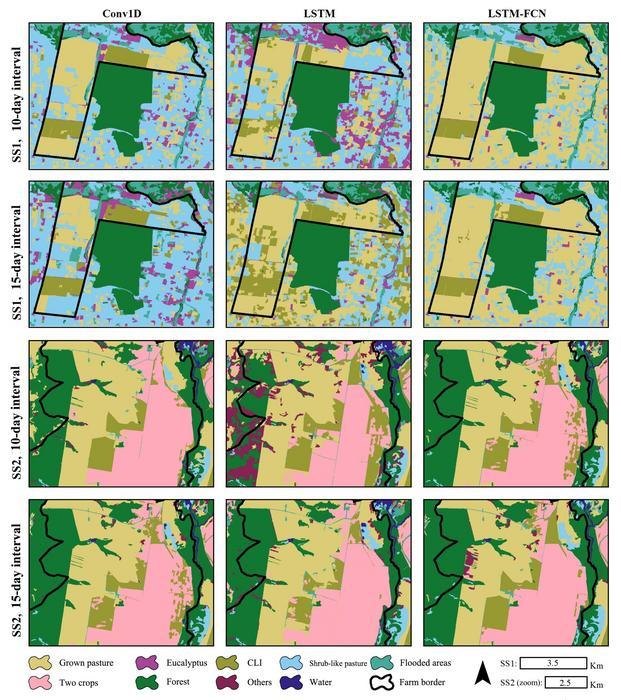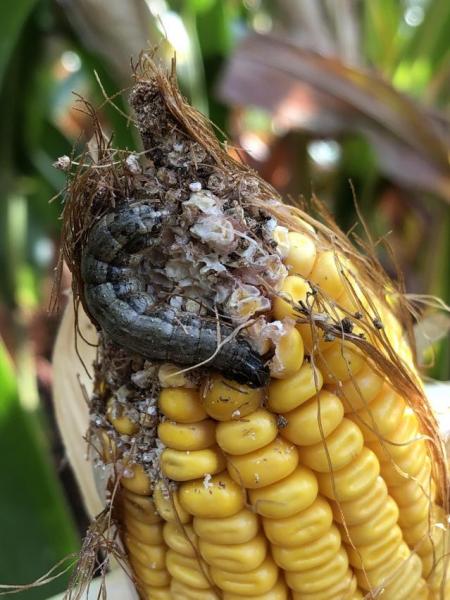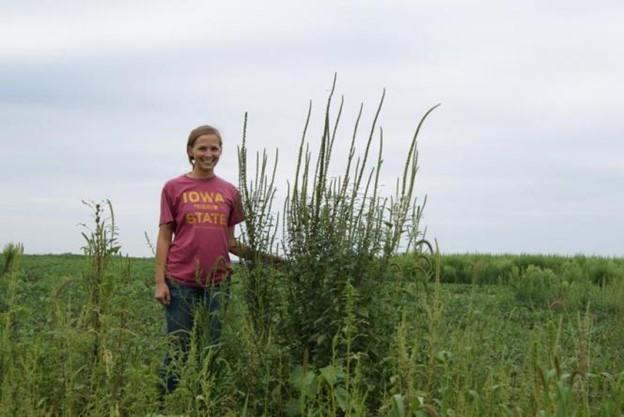Palmer amaranth and waterhemp lack hair (pubescence) on stems and leaves, while other common amaranth (pigweed) species have hair on stems or leaves. Early in the growing season, Palmer amaranth is difficult to differentiate from waterhemp due to the high variability in both species. The most reliable vegetative trait to differentiate waterhemp and Palmer amaranth is that some, but not all, Palmer amaranth leaves have a petiole longer than the leaf blade. Leaves on Palmer amaranth are often clustered tightly at the top of the plant, and Palmer amaranth often has a denser canopy than waterhemp (Figure 2).

Figure 1. Palmer amaranth leaf with a petiole longer than the leaf blade. Folding the leaf over at the base is the fastest way to check for this trait.

Figure 2. Waterhemp's open canopy (left) compared to Palmer amaranth's denser, leafy canopy (right).
Palmer amaranth and waterhemp produce male and female flowers on separate plants (dioecious). Identifying males from females should be simple due to the small, black seed produced by female flowers and the presence of pollen on male plants. Female Palmer amaranth are easy to distinguish from waterhemp due to long, sharp bracts (Figure 3) surrounding the flowers (Figure 4). If you discover this weed, steps should be taken to remove all female plants to prevent seed production

Figure 3. Comparison of a female Palmer amaranth flower and a female waterhemp flower.

Figure 4. A female Palmer amaranth with multiple, long terminal inflorescences.
Continued vigilance is imperative to slow the speed with which Palmer amaranth invades our state.
Source : iastate.edu